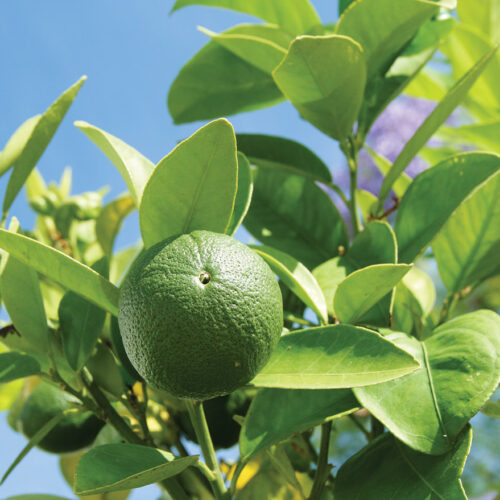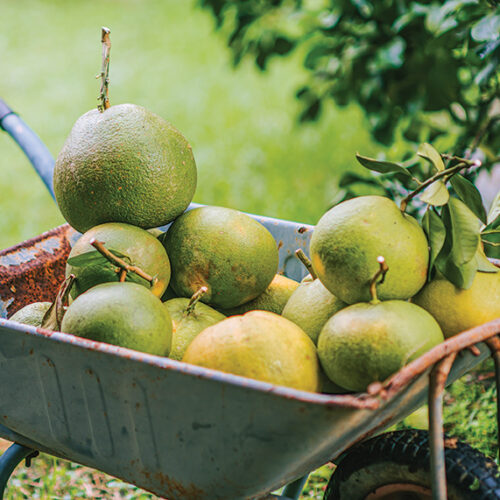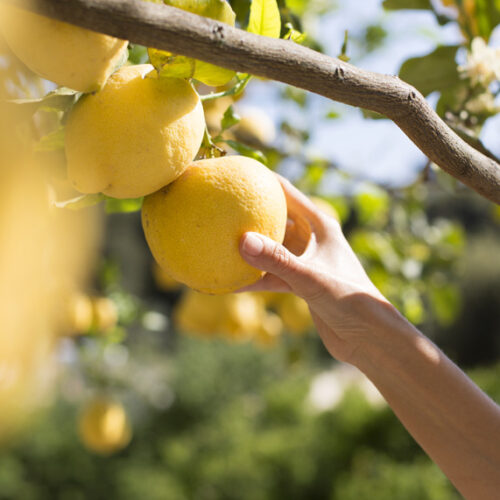Citrus tree care guide
2024-01-01T13:37:38+11:00
Want to grow juicy citrus fruit but don’t know where to start? Here is everything you need to know about growing citrus trees.
Contents:
1. What citrus should I grow?
2. How to plant a citrus tree
3. How to grow citrus in pots
4. Seasonal citrus tree care
6. How to prune citrus trees
7. When to fertilise citrus
8. Citrus pests
What citrus should I grow?
Choose a citrus plant that suits your location, including the climate, soil, sunlight and size of your backyard. Lemon (Citrus x limon) are well suited to many parts of Australia. They are versatile and can tolerate a range of conditions. Large gardens can accommodate the taller Lisbon, which reaches 8m high by 4m wide, or Eureka at 4m high by 3m wide. If you have a smaller garden, your best options are Meyer, which grows about 3m high by 2m wide, or a dwarf form of Lisbon or Eureka.
Another popular citrus to grow is orange (Citrus x sinensis). Navel and Valencia oranges are well-suited to many Australian regions. Navel oranges are typically seedless, while Valencia oranges are known for their juiciness.
Before planting, it’s advisable to check with local nurseries for advice tailored to your specific location and conditions.
For some quirky and unusual citrus varieties to try, read here.
How to plant a citrus tree
Winter is the perfect time for preparing the ground and planting new citrus trees. If you’re in a cold, frosty area, hold off the planting until spring when the risk of frost has passed. Consider the brightest, sunniest spots you have in your garden – citrus like lots of sun – and choose one that is protected from strong winds, as wind can really knock these trees about. The soil must also be well drained, so avoid damp and boggy spots.
Take your time preparing the soil. Mark out an area about 1.5m², remove all of the grass and weeds, then enrich the soil by incorporating generous amounts of compost or well-rotted manure. If your soil is heavy clay, mix in some gypsum, too, and then shape the improved soil into a raised mound to improve drainage. In the centre, dig a planting hole that’s about twice the size of the root ball.
When you remove the plant from its container, gently tease the roots before putting it in the hole. Position the root ball so the top is level with the surrounding soil, then backfill and firm it in. Shape a circular ridge of soil around the base of the plant to hold water, then water well. Cover the soil with mulch, and keep the soil moist for the first few months as the plant settles in. Don’t fertilise at planting – wait a month or so before adding a handful of organic fertiliser around the base of the tree. There’s no need to stake either – most citrus trees you buy are strong enough to stand up on their own.
For advice on what to plant under your citrus tree, read here.
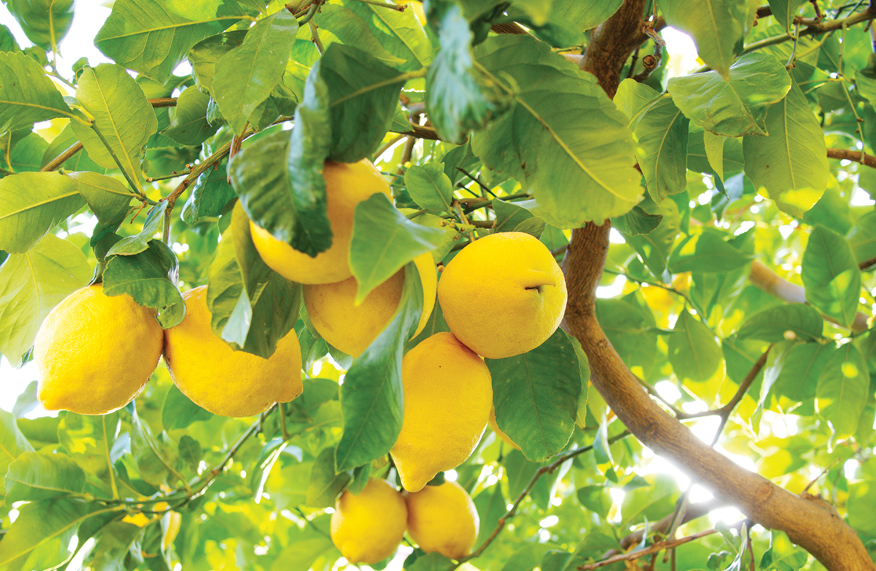
How to grow citrus in pots
Any citrus that performs well in your area can be grown in a container, which is great news if you’re short on space or you garden on a balcony. You need a large container, at least 100L (that’s about 60cm wide and 50cm deep – anything else is too small to grow a decent tree), and it must have at least one good drainage hole. In a few years, you could pot it up into a larger container. A 250L container will keep an established tree happy for many years without the need to re-pot. Use only a premium potting mix that has the red Australian Standard logo with five ticks.
Choose a spot that gets plenty of sun, with some protection from the western sun for the first year or two. Place the container on pot feet or bricks, so that the water drains away freely. Keep in mind, potted citrus need more regular watering than those in the ground. Check the mix regularly to see if it has dried out and needs re-wetting. Severely dry mixes that have shrunk and come away from the sides are very hard to re-wet. Don’t delay in rectifying the situation by applying a wetting agent to help rehydrate the mix.
Seasonal citrus tree care
Citrus trees are evergreen, which means they keep their leaves year-round. Most varieties flower in spring with fruit ripening from late summer, however some will fruit throughout the year. You’ll need to give your citrus trees regular care and maintenance.
Summer citrus tree care
Give your citrus tree the attention it craves during the summer months. Remember to weed under the tree before giving it a deep drench of water. If it has been raining, check how moist the soil is before watering. For more citrus care tips, read here.
Autumn citrus tree care
Autumn is the time to give your citrus trees some extra TLC, ahead of the winter-time harvest. Citrus trees draw on a lot of the soil’s nutrients when producing fruit, so it’s time to put some back. Start by giving the soil beneath the tree a good soaking from the trunk to just beyond the outer edge of the canopy. Then spread a fruit and citrus fertiliser over the area at the rate recommended on the packet, and water again, to help direct the nutrients down to the tree roots. For more autumn care tips, read here.
How to prune citrus trees
You can get away with never pruning a citrus tree; it doesn’t need to be pruned in order to fruit better. The only issue is, it will keep getting bigger until one day, in a fit of frenzy, you feel compelled to take to it with a saw and give it an almighty chop back. This can severely stress the tree.
Think of the leaves as solar panels. When you remove all the branches and foliage, you take away the tree’s ability to produce the energy it needs to grow, and force it to rely solely on stored energy until it recovers (and there’s a chance it won’t). Furthermore, removal of the canopy exposes the remaining branches to direct sun. This often burns and cracks the bark, which exposes the tree to infection and other problems. Then there is the issue of fruiting. Hard pruning removes all the fruiting wood, so even if the tree recovers, you are unlikely to see fruit in the next season. What’s the point of that? For more advice on the best way to prune citrus, read here.
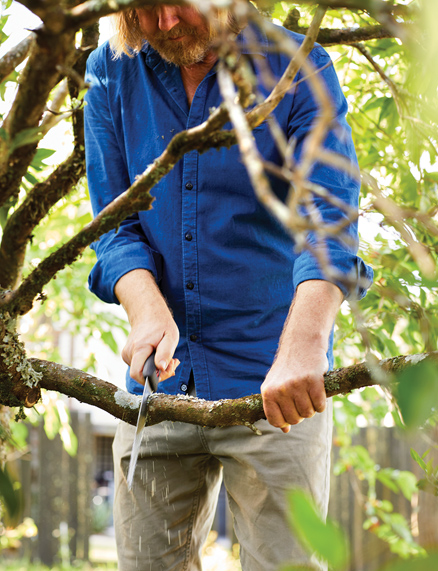
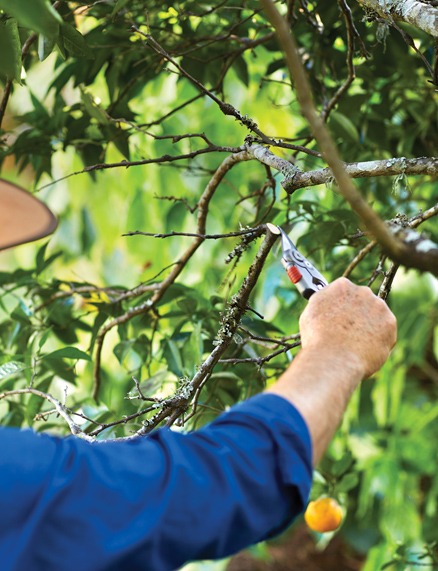
When to prune citrus trees
The way to manage the shape and size of an established citrus tree is to prune annually. The best window for pruning citrus is in late winter to early spring, when flowers are starting to form for the next season’s crop (hold off until late spring in frosty areas).
What to prune
The key point to remember is not to give the canopy an all-over haircut, like you would when shaping a hedge or topiary. This removes all of the fruiting sites, which means you’ll get little or no fruit next season. Instead, focus on cutting back a selection of the longest and most offending branches. These include tall upright branches and side shoots that grow beyond the desired size and shape of the canopy. Cut them back to about 30cm inside the line of the canopy you want to maintain. These cuts will shoot, then start flowering and fruiting again in the following season. Aim to cut out about 20 percent of the canopy each year using this approach.
To finish up, trim any branches that are touching or nearly touching the soil, lifting the lower canopy to about 1m above the ground. This helps to maintain airflow through the canopy and reduces the potential for fungal diseases.
For more citrus pruning tips, read here.
When to fertilise citrus
Citrus love a good feed, and deservedly so. It takes a lot of energy to grow all that delicious fruit. Regular feeding and watering is the key to keeping them happy. Give them a feed every three months or so.
When you’re applying fertiliser, pull back the mulch then water the root zone well. Spread the fertiliser evenly under the tree, from the trunk out to the canopy edge. You can apply organic fertilisers at the rate of one handful per square metre. For synthetic types, check the application rate on the packet. Water in the fertiliser, then return mulch to the surface. Follow up with a deep drink every fortnight or so when conditions are dry.
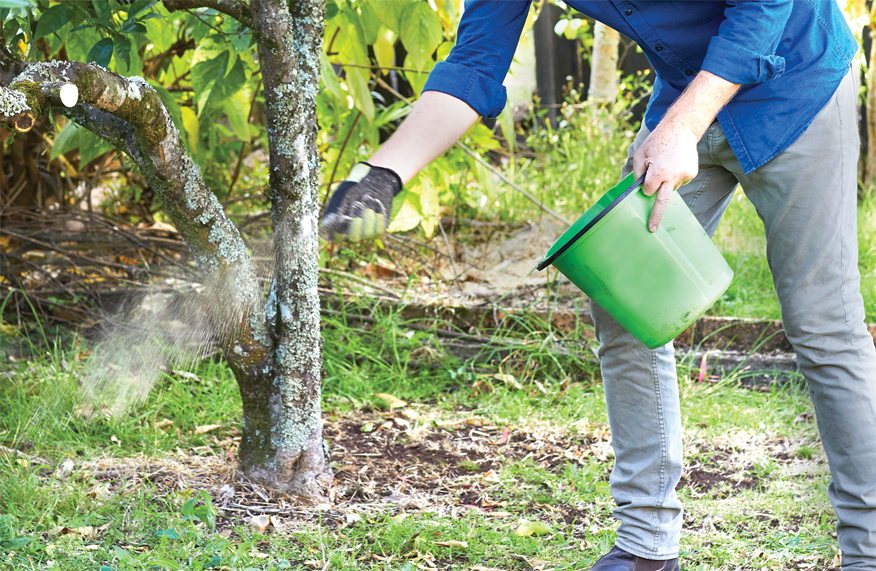
Citrus pests
Scale insects
Of all the pests that affect citrus, scale insects are arguably the most enduring. They can be found on almost any part of the tree, including the leaves, stems, fruit, branches and trunk. These sap-suckers weaken the tree with their feeding action, and in large numbers they can cause a lot of damage from leaf, twig and branch dieback, even to the point of death for some trees.
Check your trees regularly, inspecting every surface, from the trunk to the underside of the leaves. If any type of scale is present, spray the affected surfaces thoroughly with a diluted horticultural oil. These oil sprays work by suffocating the scale. If you find you have a heavy infestation, make one or two follow-up applications at monthly intervals. Once the scale insects are under control, any sooty mould that was present will naturally disappear, too.
Stop stink bugs
You’ve probably seen these nasty-looking critters crawling over citrus trees in spring, and if you haven’t, then you’re likely to have smelt their presence as you brushed past. Also known as bronze orange bugs, these slippery little sap-suckers not only stink, they also do significant damage to citrus. Like many sap-suckers, they have a liking for tender new growth, destroying the shoots with their feeding action. They also like to suck the sap from flower and fruit stalks, causing the blooms and fruit to fall prematurely. Large infestations of the pest will significantly reduce your crop, so you need to be on a constant lookout to keep their numbers down.
For more on removing stink bugs, read here.
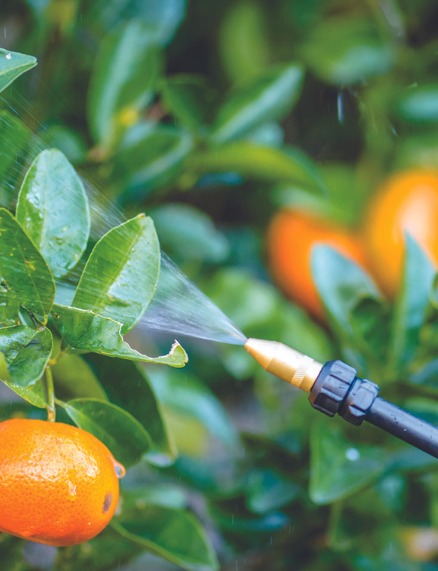
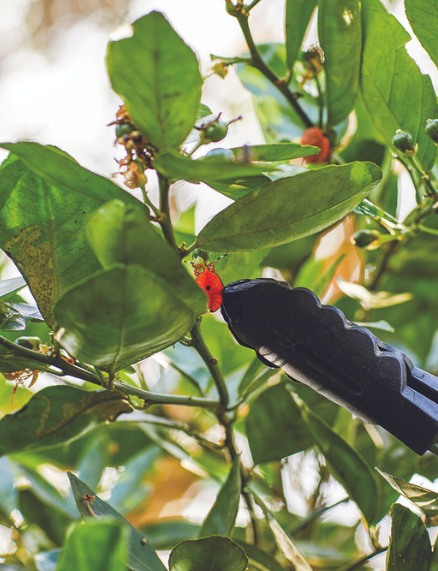
Text by Phil Dudman


